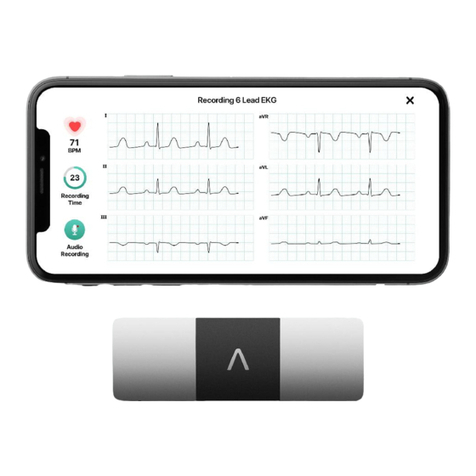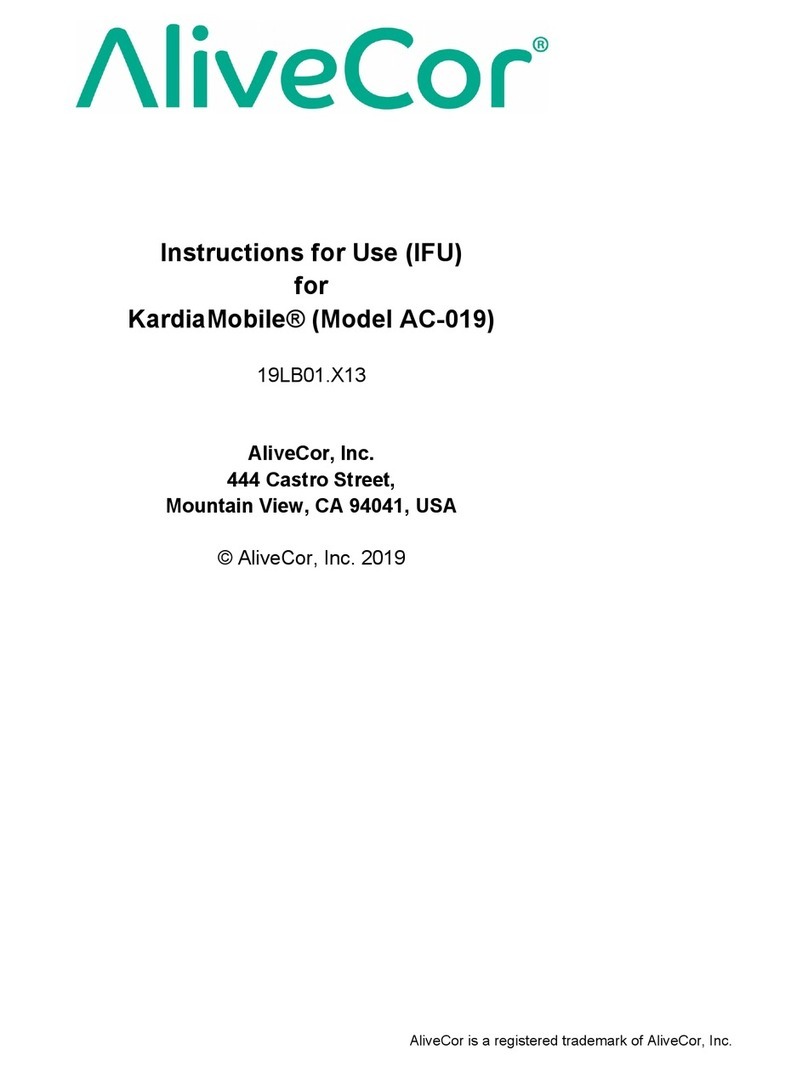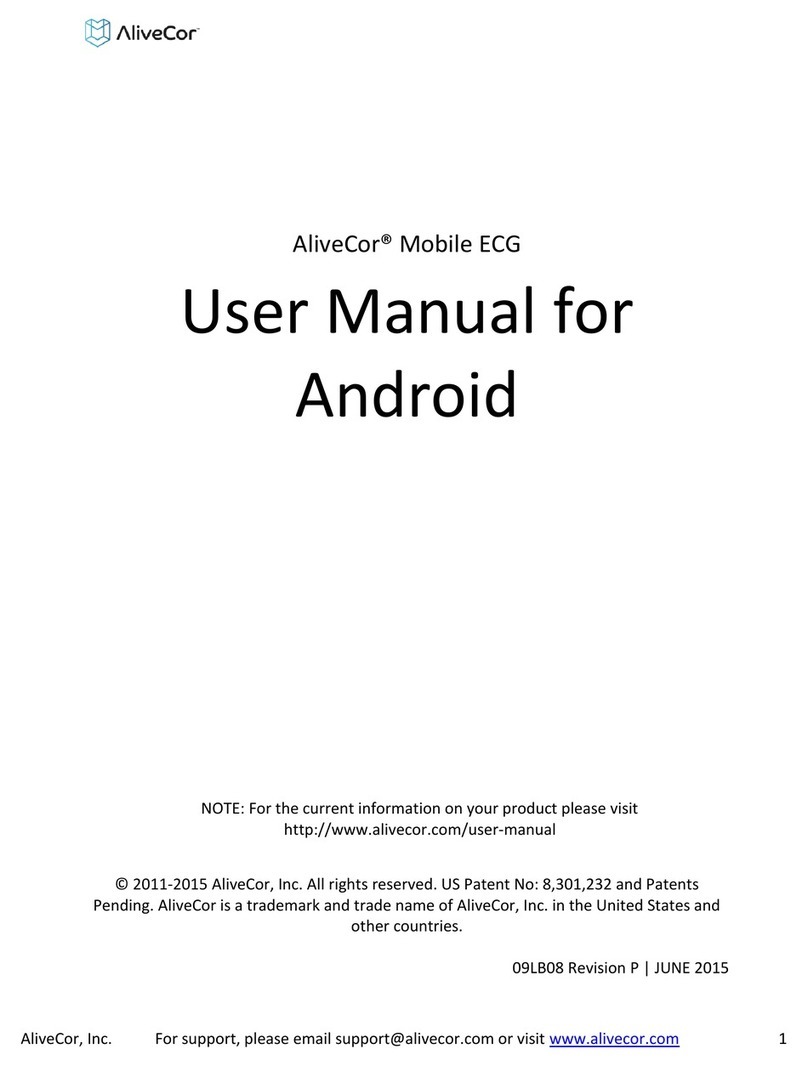
AliveCor, Inc. For support, please email support@alivecor.com or visit www.alivecor.com 16
The Unreadable detector determines whether a recording can be accurately interpreted or not.
After you take an EKG, if interference is detected you will be notified within the app that your
recording is Unreadableand given some suggestions for acquiring the best quality EKG recording.
You subsequently have the option to Save the recording, or Try Again. If the recording can be
analyzed, the AF and Normal detectors will run on the EKG and inform you as described above.
CAUTION: After EKG analysis, the app may incorrectly identify ventricular flutter, ventricular
bigeminy, and ventricular trigeminy heart conditions as unreadable. Please consult with your
physician.
13.1. What is Atrial Fibrillation?
The most common type of non-sinus tachyarrhythmia is atrial fibrillation. In this case,
disorganized electrical impulses that originate in the atria and pulmonary veins initiate the
electrical activity in the conduction system of the heart. This causes what are commonly
termed as irregularly irregularheart beats.
When a heart is in atrial fibrillation, its two upper chambers, the right and left atria essentially
quiver, instead of beating efficiently. This does not allow for complete emptying of the atria
and thus, blood may become stagnant and create blood clots. This can lead to major
problems, namely, strokes, transient ischemic attacks (TIAs), and pulmonary emboli (PEs);
depending which chamber of the heart has the blood clot in it.
Approximately 15 percent of strokes occur in people with atrial fibrillation. As age increases in
a population, so too does the incidence of atrial fibrillation, which peaks at about 3-5% in
people over the age of 65.
The most common presenting symptoms of atrial fibrillation are palpitations, dizziness, fast
pulse rate, irregularly irregular rhythm, an abnormal heart sound (S1), chest pain, chronic
shortness of breath, abnormal jugular venous pressure, fatigue, and impaired exercise
tolerance. Other symptoms related to TIAs and strokes may be the initial symptoms of atrial
fibrillation.
Some of the most common causes of atrial fibrillation are long-standing hypertension,
congestive heart disease, cardiac valvular lesions, myocardial infarctions, history of coronary
artery bypass grafts, hyperthyroidism, alcohol abuse, smoking, diabetes mellitus, and
electrolyte imbalances.
13.2. AF, Normal, Unreadable, and Unclassified Recordings in EKG review screen and Journal
All tracings analyzed as positive for atrial fibrillation, normal, or unreadable will have a tag for
future review. The Kardia phone app and Kardia watch app may display the Unclassified
message for a tracing that is not Normal and not AF, and interference was not detected. An
example of an unclassified tracing is one where tachycardia is observed. These tags will be
visible in the Journal screen, Data Entry screen, and the EKG review screen.














































